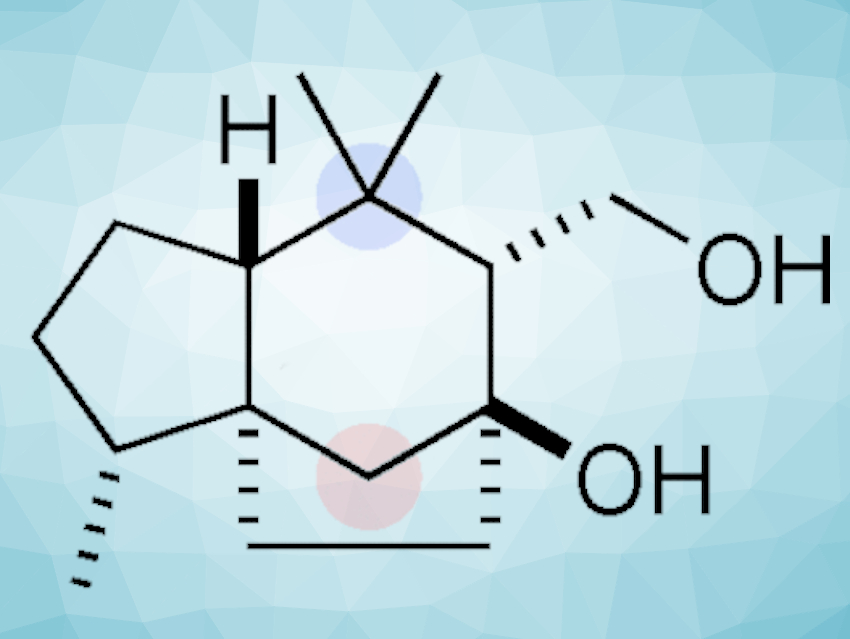Thorsten Bach, Technische Universität München, Garching, Germany, and colleagues have performed a total synthesis of agarozizanol B, an interesting natural substance found in agarwood. The key sequence in the relatively short synthetic pathway is a photochemical reaction cascade that involves a series of complex rearrangements of polycyclic intermediates.
Sesquiterpenes
Terpenes are natural substances that mostly come from plants and have great structural diversity. Formally, they are built up of isoprene units (2-methylbuta-1,3-diene). Sesquiterpenes, terpenes made of three isoprene units, are the biggest and most important subset. Their basic framework consists of 15 carbon atoms that can be arranged in very different ways, usually in systems of several carbon atom rings. Some polycyclic sesquiterpenes are used as scent and flavoring compounds, as well as pharmaceutical agents.
A family of sesquiterpenes with antidiabetic activity and a high degree of structural complexity has recently been isolated from agarwood (also known as eaglewood) and several other plants. They all share a common central framework known as a prezizane skeleton. The team completed the total synthesis of one member of this family of natural products, agarozizanol B.
Short Synthesis
The prezizane skeleton is a system of three rings of carbon atoms: a six-membered ring that is attached to a five-membered ring along one edge and is also bridged by a further two carbon atoms to form a second five-membered ring. The challenge in synthesizing such a structure is that the skeleton can exist in two mirror-image forms. Agarozizanol B also has two side groups that must also have the correct spatial orientation.
The starting point for this eleven-step reaction sequence—which is very short for a total synthesis—is an indanone derivative. This compound already contains a system with one five-membered ring and one six-membered ring—albeit an aromatic one. The missing carbon atoms are attached to the indanone in the form of an olefin sidechain.
Photochemical Reaction Cascade
At the core of this synthesis is a photochemical cascade that includes three light-driven reactions and a series of complex rearrangements of polycyclic intermediates. The first step produces a strained tetracyclic framework that contains all of the carbon atoms of agarozizanol B in the correct relative positions—with loss of the unwanted aromaticity of the six-carbon ring. Later, a conversion leads to the tricyclic prezizane skeleton through opening of a three-carbon ring in an intermediate (splitting of a cyclopropane bond).
“In this way, we obtained a mixture of the (+)- and (–)-forms as well as pure (+)-agarozizanol B, which is identical to the natural product,” says Thorsten Bach. “Our recently developed photochemical cascade reaction has proven to be highly promising for future syntheses of other natural products.”
- Concise Total Synthesis of Agarozizanol B via a Strained Photocascade Intermediate,
Niklas Rauscher, Line Næsborg, Christian Jandl, Thorsten Bach,
Angew. Chem. Int. Ed. 2021.
https://doi.org/10.1002/anie.202110009




